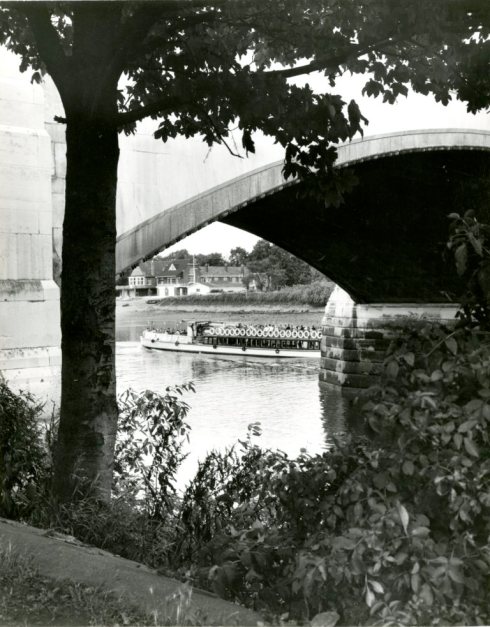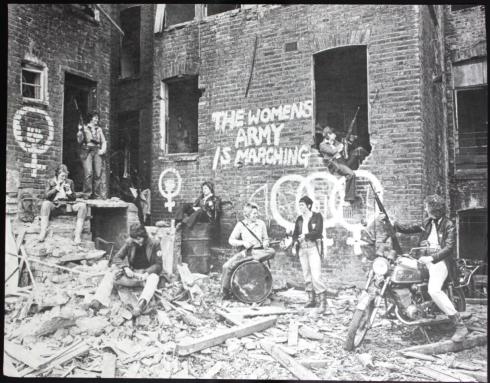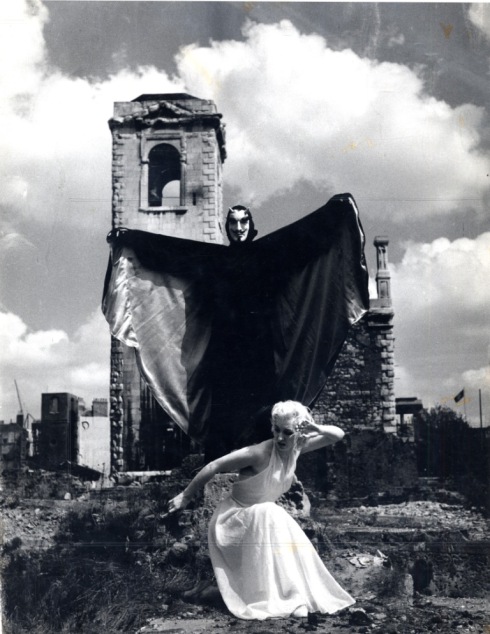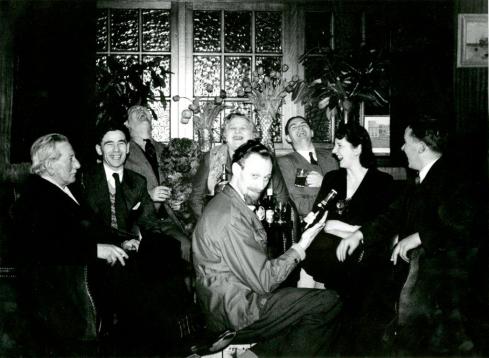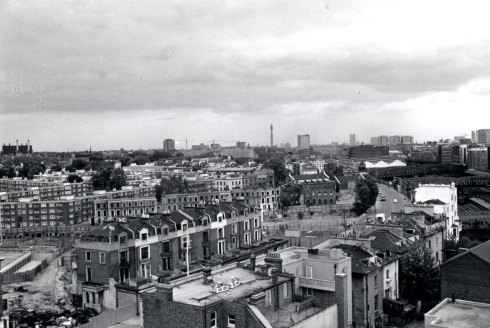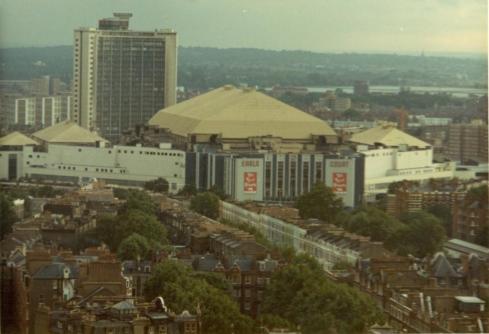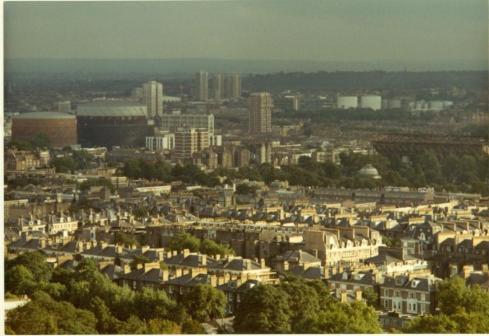Now, I know what you’re going to say.
Blythe House, Dave, it’s in Hammersmith. It’s not “on the border”, it’s way beyond the border. It’s in another territory. The sheriff will be after us if we go there. Well, bear with me, see if I can work something out. I saw Blythe House the other day on TV, in “Hard Sun”, I think. They showed that gate through which a large metal sculpture of a face is visible. Spotting locations is the curse of watching television in our house, whether it’s the London we know or the New York we think we know from years of virtual travel. Blythe House has been a frequent location on film and TV so although you might never have heard the name, you’ve almost certainly seen the place, from the outside, and maybe inside as well.
As had urban explorer Bernard Selwyn, who left us a large set of photographs dated 1977 when the building was nearly empty and he seemed to have the run of the place. I always knew I was going to use them on the blog one day, and that’s today. The Selwyn Collection, a valuable source for the visual history of west London, knows no borders, so this week let’s take our chances and steal away from our usual haunts.
Just gimme the facts, ma’am: Blythe House was the headquarters of the Post Office Savings Bank (the forerunner of National Savings and Investment), founded in 1861. Blythe House was built between 1899 and 1903 and has all the hallmarks of a grand Edwardian public institution with a certain amount of municipal shock and awe in its appearance.
At its height about 4000 people worked there. The headquarters of the bank moved to Glasgow in the early 1960s and the Blythe House office were run down, finally being emptied out in the late 1970s.
There is still a sorting office in the building though and you can see some Royal Mail vans below.
I’m not sure whether Selwyn took all these picture himself or whether he acquired them from one of his sources, but they are a thorough collection, not merely the visible exterior but the roof as well.
Some pretty impressive vistas from there.
But bear this notice in mind when wondering around.
Especially if looking over the edge.
Either at the courtyards below
Or the other block (built in the 1920s), visible here.
Or the chimney (at one time the building had its own power station).
The impression is that you’re looking at a small self-contained city, like a little Gormenghast, with its own great halls and hidden districts.
The streets below seem very distant.
Inside, the staff were beavering away.
Is it me, or does this look like a bit of a skeleton staff?
The publicity department, I believe. (Some displays and posters are visible at the back.)
In Dickensian office tradition there were ledger rooms.
The amount of stationery on view shows how it was before IT reached the office. It makes me remember how long libraries lasted without a PC on every desk.
Now, paper systems look antiquated and clumsy (although I speak as someone who has frequent recourse to card catalogues, filing cabinets, scrapbooks etc in my work, so the days of manual retrieval of information have not gone yet.)
Below, one of the “small offices” has been tastefully decorated and turned into a nest for its inhabitants.
The woman with her back to us is wearing a dress with a characteristic 70s geometric design.
But by 1977 the building was sparsely populated. Many empty desks and work stations.
Some rooms were even deserted at his point, showing off the large spaces supported by pillars, the polished wooden floors and the glazed brickwork.
I love these empty spaces in public buildings. (Remember this one?)
There is a kind of half-life in deserted places.
As if the occupants have just slipped out for a moment.
Outside, even the car park had a pastoral feel.
Blythe House is now used by the V&A, the Science Museum and the Natural History Museum as an offsite storage facility. There has been talk of opening it to the public as a Museums annex, which sounds brilliant. I would certainly go. But we’ll have to wait and see. Plans come and go, and brilliant places sometimes end up closed. Who remembers the Museum of Mankind? One of my favourite places in London, now long gone.
I saw the face sculpture in person while walking past the building on my way to a house in the area. It was an area I’d never visited before, which I couldn’t even put a name to apart from the vague term West Kensington. London is full of places you’ve never been to, which can surprise you with places like Blythe House, well known to residents but sometimes unfamiliar to strangers.
Postscript
As always when I stray across the border of Kensington and Chelsea I find myself without the back-up of the Local Studies collection when it comes to further details on the subject. So I must refer you to my colleagues at Hammersmith and Fulham Local Studies and Archives for more on Blythe House.
As a bonus this week, I’ve been thinking about the pre-IT days of libraries and here are a couple of pictures to puzzle over.
This shows “the chute” at Kensington Library. On busy Saturdays, so the story goes, if the chute got blocked with books, a small member of staff was sent down the hole to clear it.
And this is an early attempt to issue books by tapping into the brain waves of library staff. (Note the protective sun glasses.)
It isn’t, obviously. But which hair-brained issuing system was it?





























































































